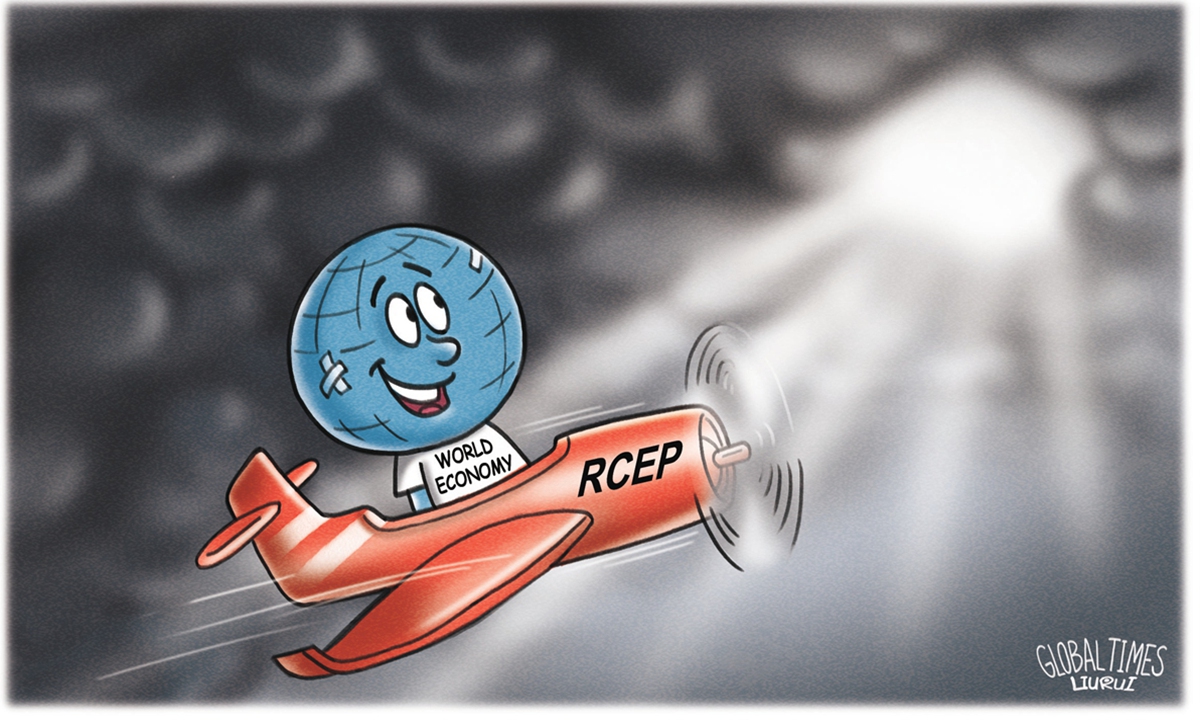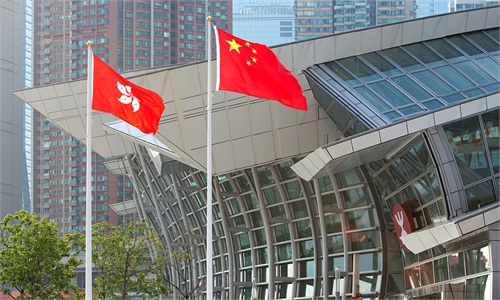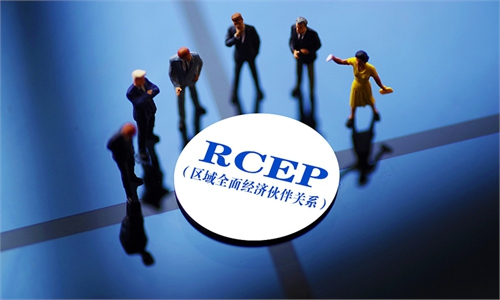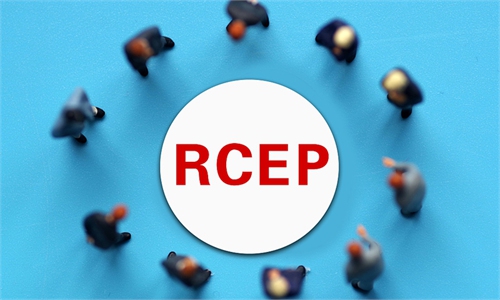
Illustration: Liu Rui/GT
It is often said that politics these days is all about giving signals. If that is the case, China has recently given two potent signals that bear on the future of world trade and globalization.On November 15, it signed the Regional Comprehensive Economic Partnership (RCEP) with 14 countries after eight years of talks. Encompassing a population of 2.2 billion people and a GDP of 29 percent of the world economy, RCEP can well be considered the largest such trade deal that has ever been signed. Also, at the virtual APEC summit in Kuala Lumpur, President Xi Jinping announced China's interest in joining the Comprehensive and Progressive Trans-Pacific Partnership (CPTPP), often referred to as the TPP11, which includes six members of the RCEP, plus a number of countries in the Americas.
President Trump, of course, famously ditched the TPP in January of 2017, in one of the first acts of his administration. More recently, he also snubbed both the virtual ASEAN meetings (whose 10 members are part of the RCEP) and East Asia Summits to which he had been invited. The signals could not be clearer: While China presses ahead with Asia's regional integration, the US is otherwise engaged.
The very fact that the three economic heavyweights of East Asia (China, Japan and South Korea) have joined such an economic group despite their ongoing differences is historical. The same goes for having Australia (and New Zealand) within the RCEP. Asia and Australasia are moving ahead with regional economic integration, while the North Atlantic countries continue to wallow in protectionism and arcane disputes about how to finalize Brexit. The latter has consumed by now four years of the European Union and the United Kingdom's attention, and shows no sign of coming to an end soon.
From a broader perspective, the fact that India at the last moment decided to drop out of the RCEP is also revealing. For the past three years we have been peddled the story that the very notion of the Asia-Pacific (on which entities like APEC were founded, as the Cold War ended) was obsolete, and should be replaced by that of the Indo-Pacific. The latter was in many ways the maritime response to China-proposed Belt and Road Initiative (BRI). All sorts of figures in terms of cargo crossing the Indian Ocean and reaching the Pacific were bandied about as part of this sales job. The jewel in the crown of all this was the Quadrilateral Security Dialogue (QSD, also known as the QUAD), that includes the US, Japan, India and Australia, whose foreign ministers met on October 6 in Tokyo with much fanfare. Hailed by some as the equivalent of an "Asian NATO" in the making, the QUAD has been built up as a major shift in the region's architecture. By definition, India is at the very center of this construct, and must play a key role in it. There were high expectations that India would take up this role with great brio and impetus.
Yet, you can't really have at the center of any such construct a country that marginalizes itself from the broader Asian regional integration project. This confirms, de facto, the continuing validity of the notion of the Asia-Pacific as the region where the action is, and the reality that South Asia is not yet ready to join it ( much as India refused to join APEC in 1990, when invited to do so; neither is India part of the CPTPP). Yes, there is something to the idea of the Indo-Pacific, but it will be a long time before it comes into being as a geopolitical and geo-economic entity. Right now, it is mere wishful thinking.
We are thus witnessing the return, in full regalia, of the Asia Pacific to the center of world affairs. If China were to join the TPP11, and we could look at the possibility of a merger between the RCEP and the TPP11, that would be a real game-changer. It would certainly move us further along to what Kishore Mahbubani has referred to as the Asian Century.
As President-elect Joe Biden assembles his foreign policy and national security team, there is much talk of reviving alliances and multilateralism. There is little doubt that the single most important step he could take in that regard after taking office would be to join the CPTPP, whose earlier version as TPP the US spent close to a decade negotiating and promoting. Yet, it tells you much about the climate in today's Washington, that most observers consider that only a far-fetched possibility.
The action in today's world is in the Asia-Pacific, but on the shores of the Potomac the eyes are firmly fixated on things such as the spat between France and Germany on the meaning of European "strategic autonomy." Good luck with that !
The author is a professor at the Pardee School of Global Studies, Boston University, a Wilson Center global fellow and a non-resident senior research fellow at the Center for China and Globalization (CCG) in Beijing. opinion@globaltimes.com.cn



